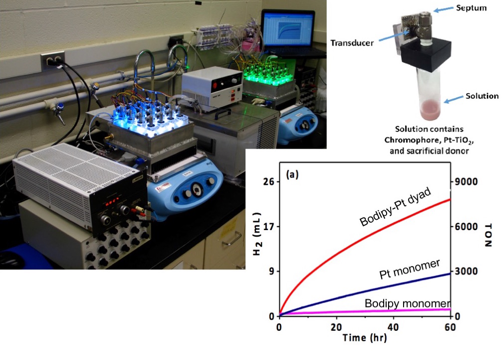Facilities
Our Laser Room
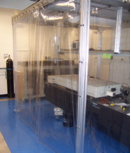
Most of our work is centered around our femtosecond laser system for ultrafast transient absorption and femtosecond stimulated Raman spectroscopy. The foundation of the system is a Spectra-Physics Spitfire titanium:sapphire laser that produces 120-fs pulses centered at 800 nm with a 1-kHz repetition rate. The laser and our 5’ x 14’ laser table are housed in a temperature and humidity controlled laser lab, with HEPA filter clean air circulating around the laser workspace.
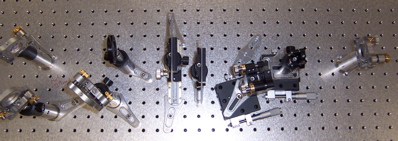
On the table, we build all the optical assemblies necessary to produce the laser poulses we use in our research. This includes a non-collinear phasematched optical parametric amplifier (NOPA), white-light continuum generation, second-harmonic bandwidth compression, stimulated Raman in a hydrogen pipe, and second- and third-harmonic generation. These optics allow us to produce short laser pulses (<100 fs) from 750-480 nm and at 800, 400 and 266 nm and continuum pulses that can extend from 250 to >1000 nm. Additionally, we have to product picosecond duration pulses in order to have the spectral resolution necessary for FSRS. We produce 1-5 ps duration pulses at 800 and 400-nm and use our Raman shifter to produce 600, 480, 343 and 300 nm pulses. Shown in the picture is a simple assembly to make a white-light continuum from the Ti:Sapph fundamental. You can learn more about this methodology in the “Continuum Generation” pdf.
Since 2007, the table has gotten quite a bit more complicated as all of these components have come together to make state-of-the-art facility. Below you can see the laser table in 2015 with Joohyun Lee and Professor McCamant.
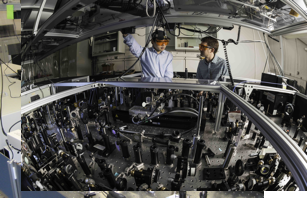
We detect our pulses with a silicon CCD from Princeton Instruments (Pixis 100BR), that allow us to readout the array in < 1 ms (as long as we only bin 15-20 rows per spectrum) and we control the optical delay between the pump and probe pulses using Newport’s IMS300LM translation stage with and XPS controller. This gives us the ability to sweep the delay between the pulses from 0 to 2 ns, with approximately 1 fs resolution. (Of course, the duration of our laser pulses limits our actual time resolution to around 40-150 fs.)
In 2015, Profs. Neidig and McCamant received a Major Research Instrumentation grant from the National Science Foundation to build a multi-user CW Raman spectroscopy facility. This facility is shared with users throughout the Rochester region and can collect CW Raman spectroscopy using solid-state lasers from 830 to 355 nm. Spectra are collected from solid and liquid samples using home-built collection optics with a Princeton Instruments CCD and triple spectrograph.
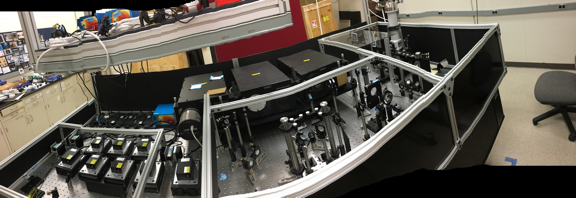
Last, but not least, we also frequently use the Eisenberg lab’s hydrogen production apparatus. This system was designed following discussions with the Bernhard group at Carnegie Melon and using their system as a model. The chemicals necessary for hydrogen production, typically a sensitizer (e.g. Rhodamine dye), catalyst (e.g. plantinized TiO2 or Co(dmg)2) and sacrificial donor (ascorbic acid), are mixed in 10 ml of water in a 40-ml vial. The vial is illuminated from the bottom with bright LED lights and the resulting hydrogen production is measured by a pressure transducer integrated into the cap of the vial. A septum in the cap allows accurate calibration of the H2 production at the end of the run. With this setup, we can measure the rate of hydrogen production as well as the total amount of hydrogen produced over the time scale of hours, days and weeks.
